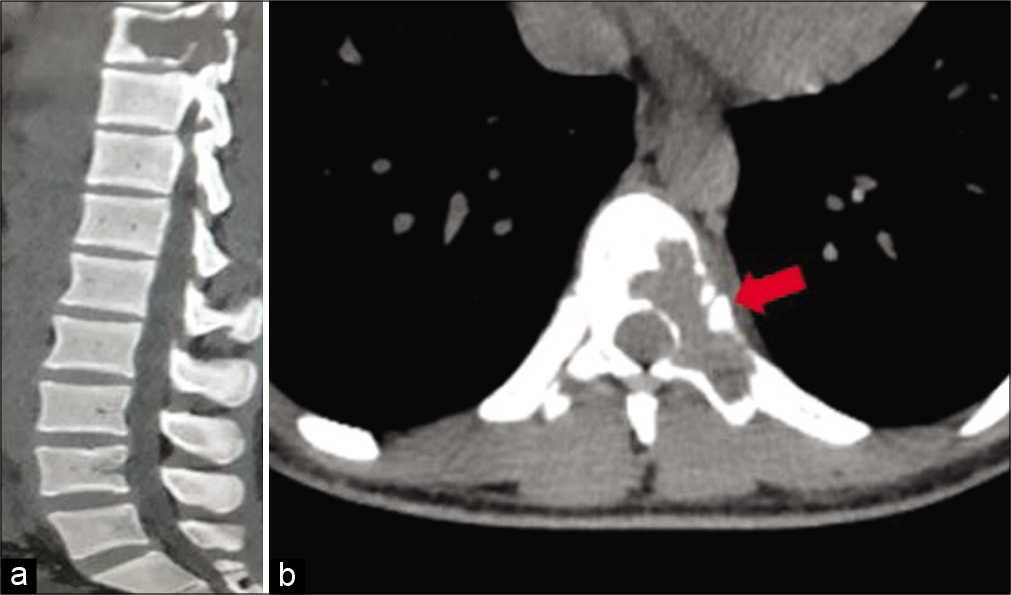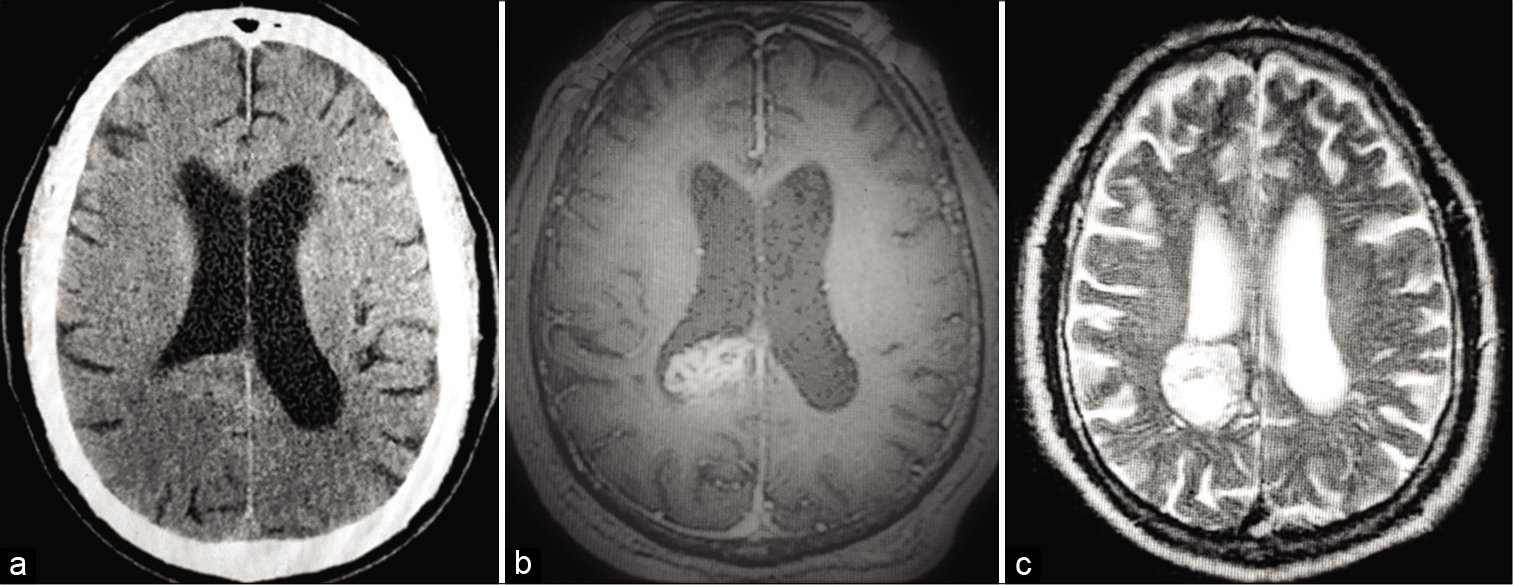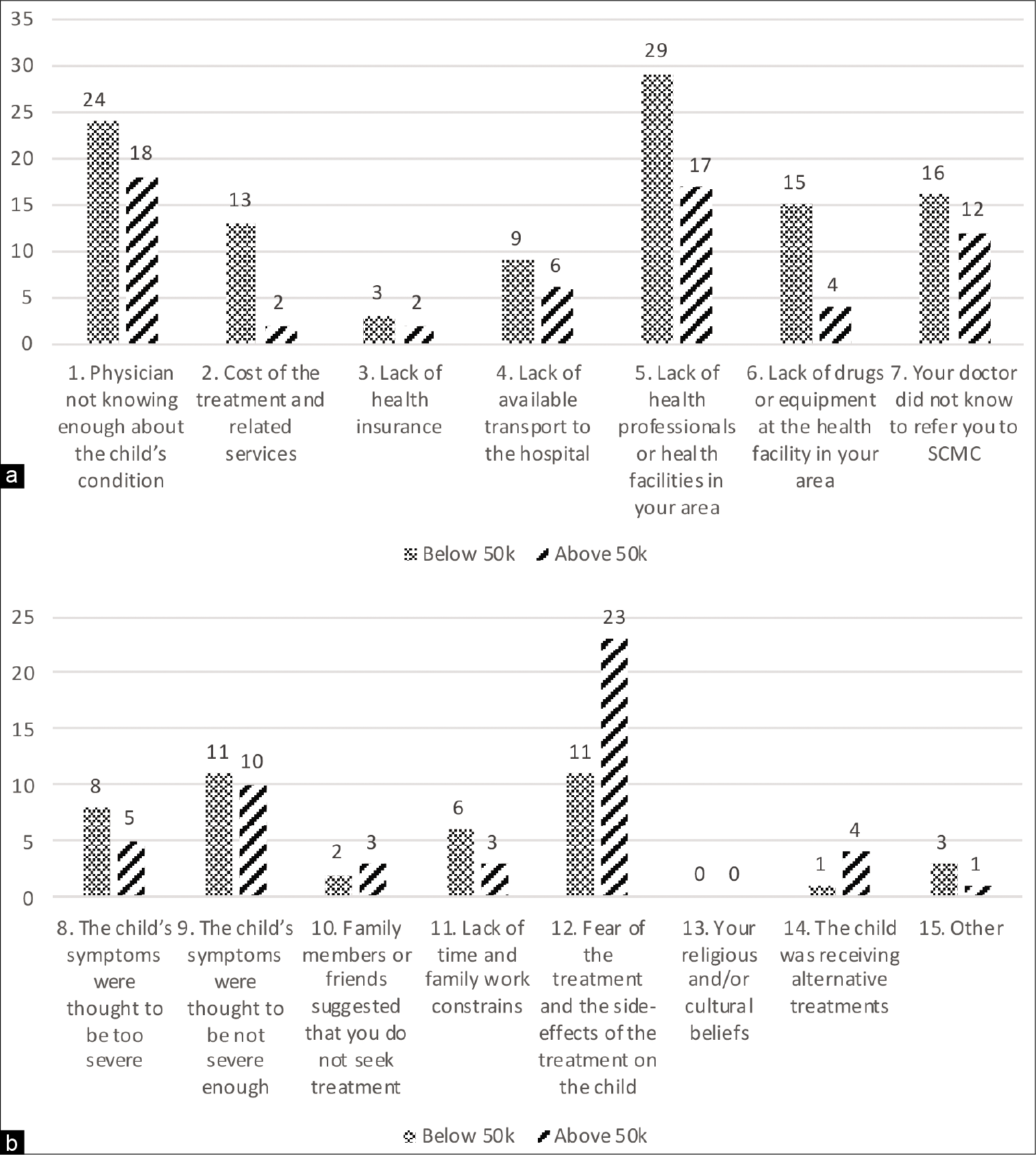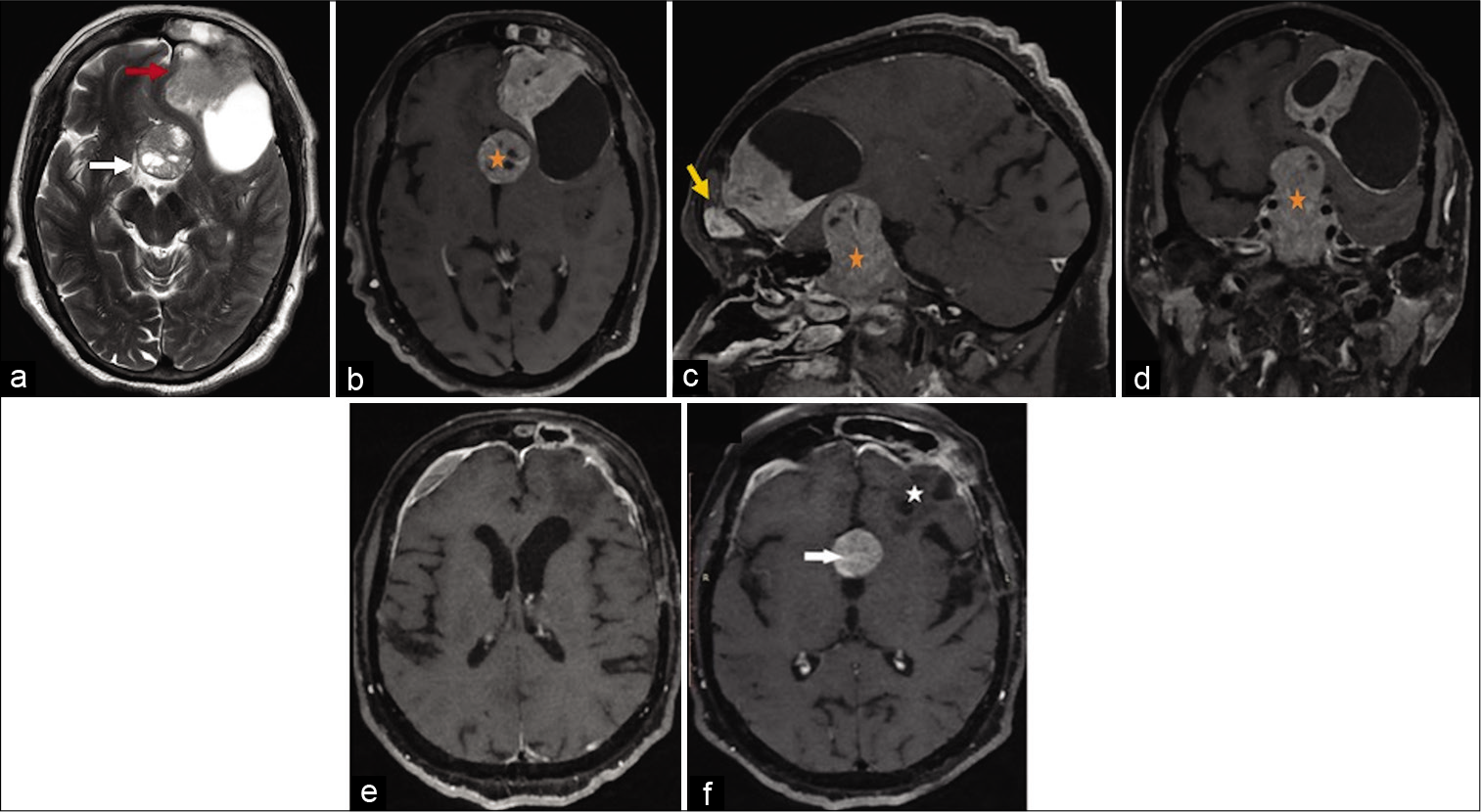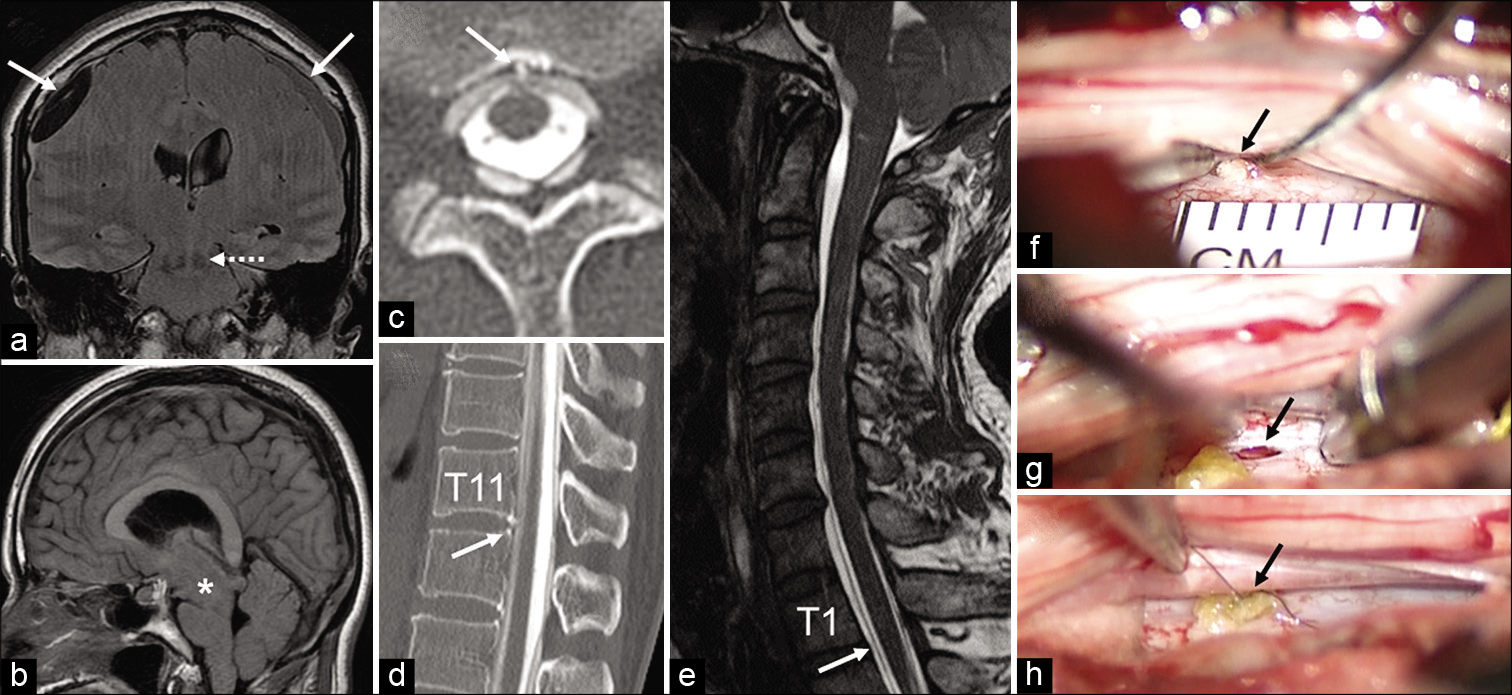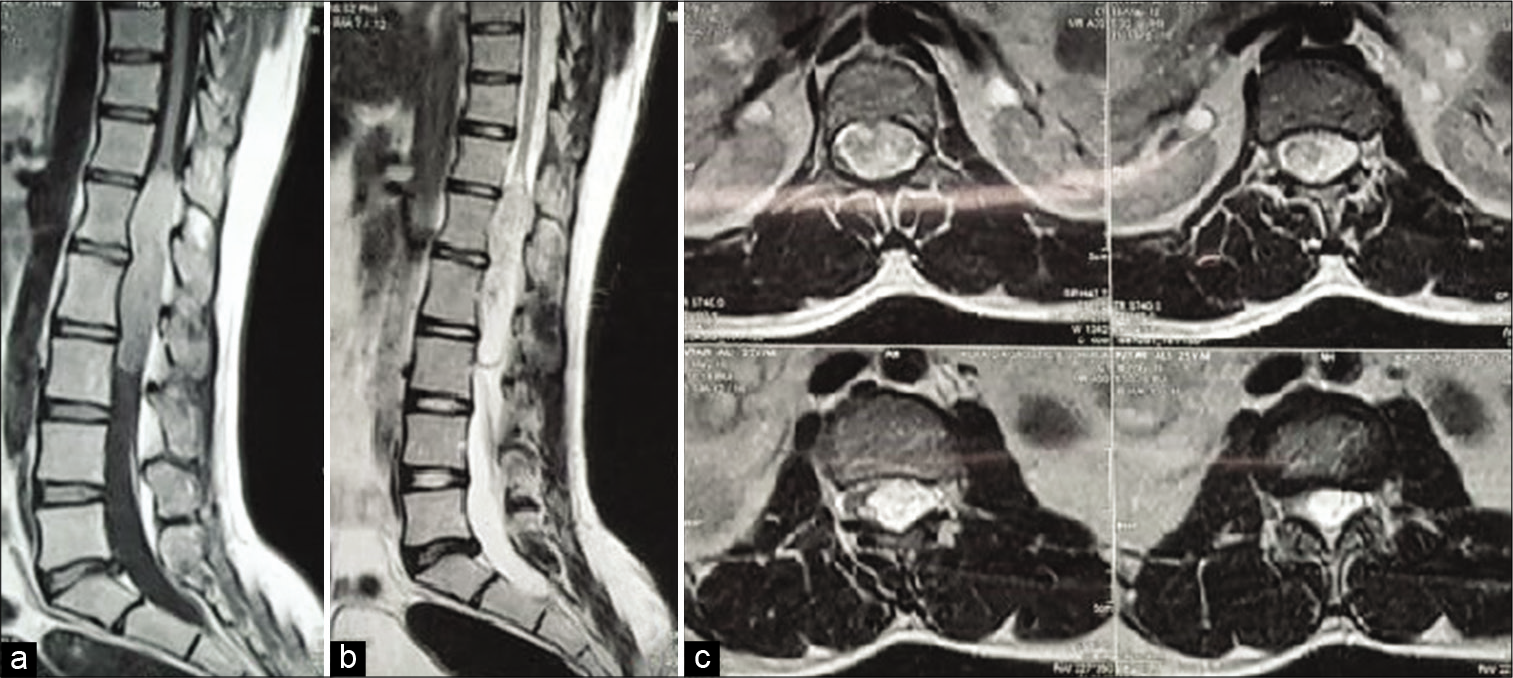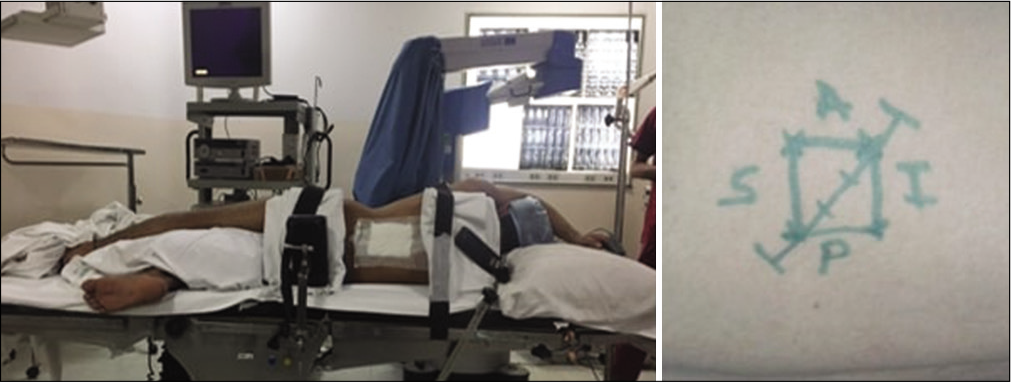Intramedullary spinal cord cavernous malformations in the pediatric population
Date of publication: 05-Sep-2020
Background: Intramedullary spinal cavernous malformations (ISCM) account for just 1% of all intramedullary pediatric spinal cord lesions. Pathologically, they are well-circumscribed vascular malformations that typically appear dark blue or reddish-brown, often coming to the spinal cord surface. With regard to the histopathology findings, ISCMs are comprised sinusoidal vascular spaces lined by a single layer of endothelial cells within a loose connective tissue stroma. As these lesions are often misdiagnosed in the pediatric population, appropriate treatment may be unduly delayed.
Aneurysmal bone cyst of thoracic spine with neurological deficit and its recurrence treated with multimodal intervention – A case report
Date of publication: 05-Sep-2020
Background: Aneurysmal bone cysts (ABCs) are rare, representing about 1% of primary bone tumors, and 15% of all primary spine/sacral tumors. Notably, when they are located in poorly accessible regions such as the spine and pelvis, their management may be challenging. Treatment options include selective arterial embolization (SAE), curettage, en bloc excision with reconstruction, and radiotherapy.
Comment regarding the article “Comparative metrics of neurosurgical scientific journals: What do they mean to readers?”
Date of publication: 05-Sep-2020
Long-term follow-up of lateral ventricular central neurocytoma treated with subtotal resection followed by concurrent chemoradiotherapy and add on chemotherapy – Case report from a Tertiary Kenyan Cancer Hospital
Date of publication: 05-Sep-2020
Background: Central neurocytomas are rare, mostly benign neuroectodermal tumors of the central nervous system typically located within the lateral and third ventricles of cerebrum. No consensus guidelines for the management of central neurocytoma available due to the rarity of the disease.
Effects of parental level of income and visual presentation of spina bifida occulta in decision making process
Date of publication: 05-Sep-2020
Background: Parents are active participants in the referral process of children with non-life-threatening surgical pathologies. Nonetheless, there is scarce literature about the influence of parent’s level of income and perception of their children’s conditions on their decision process. Our study aims at expanding our knowledge about this parameter. We focused our research on parents of children spina bifida occulta (SBO), a condition that with a broad clinical impact and that often requires timely referral.
Coexistent pituitary adenoma and frontal convexity meningioma with frontal sinus invasion: A rare association
Date of publication: 05-Sep-2020
Abstract
The coexistence of pituitary adenoma (PA) and meningioma in the same patient is rare, after excluding radiotherapy-induced meningiomas. Most of the literature on their coexistence describes meningiomas located in the close vicinity to PA, that is, in the sellar/parasellar region. We describe a case of a 65-year-old lady with a nonfunctioning PA and an associated frontal convexity meningioma with frontal sinus invasion. The imaging was nonspecific for the meningioma, and its association with concomitant PA has not been reported before.
Ventriculoperitoneal shunt complications in an adult population: A comparison of various shunt designs to prevent overdrainage
Date of publication: 05-Sep-2020
Background: Overdrainage after cerebrospinal fluid diversion remains a significant morbidity. The hydrostatic, gravitational force in the upright position can aggravate this. Siphon control (SC) mechanisms, as well as programmable and flow regulating devices, were developed to counteract this. However, limited studies have evaluated their safety and efficacy. In this study, direct comparisons of the complication rates between siphon control (SC) and non-SC (NSC), fixed versus programmable, and flow- versus pressure regulating valves are undertaken.
The algorithm for diagnosis and management of intracranial hypotension with coma: Report of two cases
Date of publication: 29-Aug-2020
Background: Spontaneous intracranial hypotension (SIH) is caused by spontaneous cerebrospinal fluid (CSF) leaks that can be treated in most cases with an epidural blood patch (EBP). However, some patients, who develop severe brain sagging, can neurologically deteriorate, and in occasional instances, which become comatose. Here, with the presentation of two cases, and a review of the literature, we have set guidelines for diagnosing SIH along with recommendations for its management.
Intramedullary mature teratoma of spinal cord: A rare tumor with review of literature
Date of publication: 29-Aug-2020
Background: Spinal teratomas are rare in adults. The clinical findings are nonspecific, reflecting only in the intramedullary location of these lesions. The potential differential diagnosis for intramedullary spinal teratomas include schwannomas, dermoids, epidermoids, and neurofibromas.
Mini-open thoracoscopic-assisted spinal thoracotomy for traumatic injuries: A technical note
Date of publication: 29-Aug-2020
Background: Mini-open thoracoscopic-assisted thoracotomy (MOTA) has been introduced to mitigate disadvantages of conventional open anterior or conventional posterior only thoracoscopic procedures. Here, we evaluated the results of utilizing the MOTA technique to perform anterior decompression/fusion for 22 traumatic thoracic fractures.


